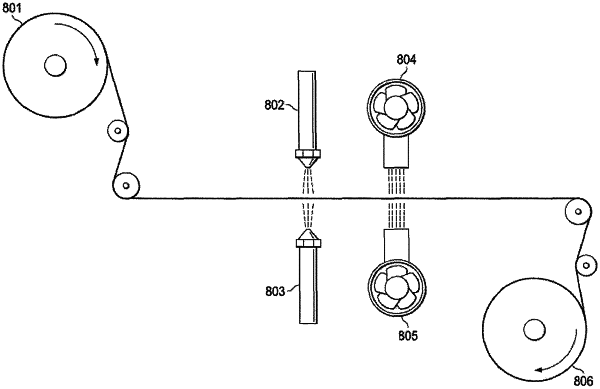| CPC B01D 61/52 (2013.01) [B01D 61/46 (2013.01); B05D 1/02 (2013.01); C02F 1/4693 (2013.01); B01D 2313/14 (2013.01)] | 14 Claims |

|
1. A method for coating a spacer to produce a unipolar or bipolar ionically-conductive spacer comprising the steps of:
cutting a spacer to a desired shape for fluid movement through and around the spacer and inserting appropriately shaped fluid channels for fluid movement through to ion exchange membranes, wherein the spacer has an exterior surface having a first side and a second side opposite the first side;
modifying the spacer to enable greater adhesion between an inert plastic substrate and an ionic coating and promotion of turbulence;
cleaning the spacer via alternating light alcohols and deionized water;
applying a cationic exchange ionomeric coating comprising spray-coating a first solubilized ionomer solution to the first side of the spacer exterior surface;
applying an anionic exchange ionomeric coating comprising spray-coating a second solubilized ionomer solution to the second side of the spacer exterior surface, wherein the cationic exchange ionomeric coating is different from the anionic exchange ionomeric coating;
drying the spacer to remove excess solvent and to cure and set the cationic and anionic ionomeric coatings as a resin which is accomplished concurrently or subsequently to the coating process via air-drying or fan drying, with or without a heat source;
immersing the spacer into a salt-containing solution for the first and second solubilized ionomers to exchange their counterions for a salt ion; and
fitting the spacer into an electrochemical device such that a conductive coating fits within an active area of the device.
|